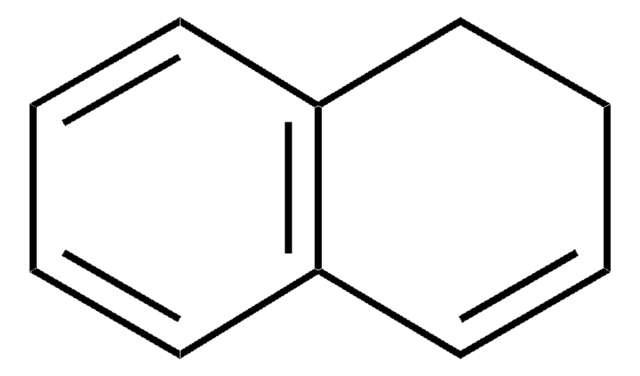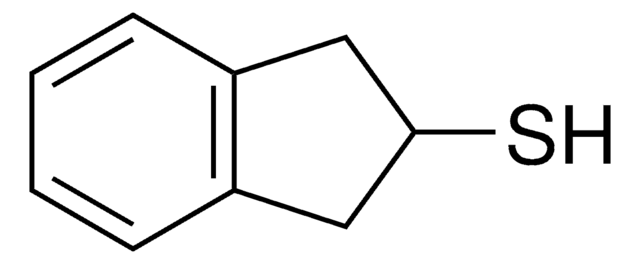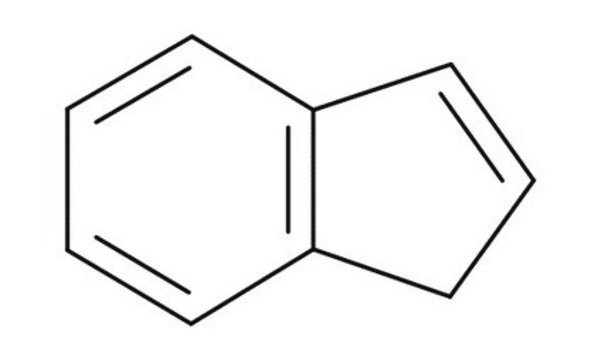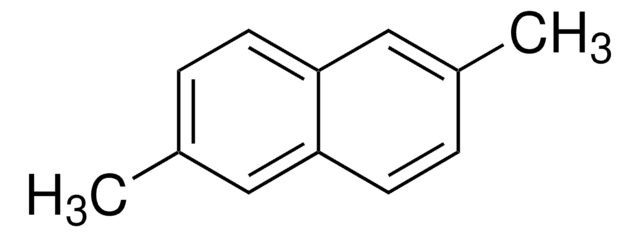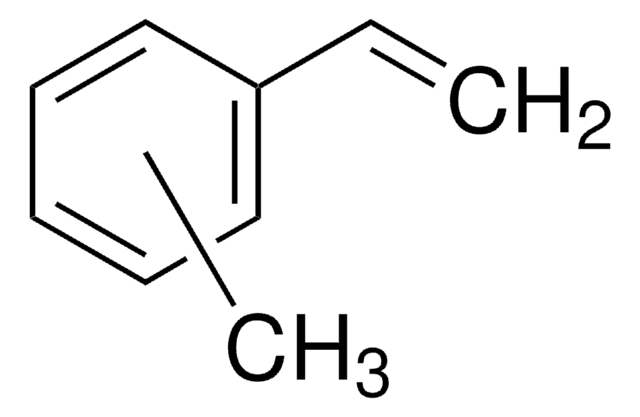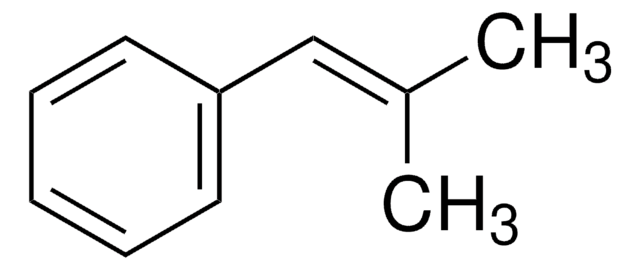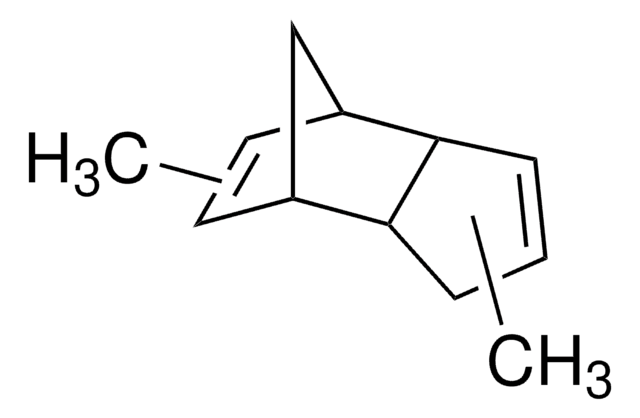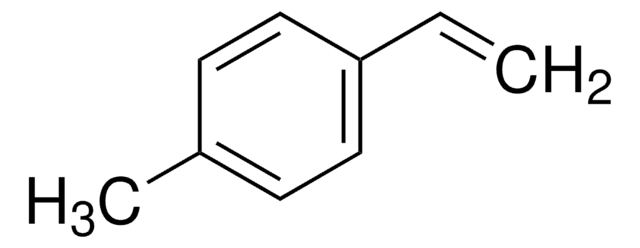Alle Fotos(1)
Wichtige Dokumente
449431
2-Methylinden
98%
Synonym(e):
2-Methyl-1H-indene
Anmeldenzur Ansicht organisationsspezifischer und vertraglich vereinbarter Preise
Alle Fotos(1)
About This Item
Empirische Formel (Hill-System):
C10H10
CAS-Nummer:
Molekulargewicht:
130.19
MDL-Nummer:
UNSPSC-Code:
12352100
PubChem Substanz-ID:
NACRES:
NA.22
Empfohlene Produkte
Assay
98%
Brechungsindex
n20/D 1.567 (lit.)
bp
45 °C/0.2 mmHg (lit.)
Dichte
0.971 g/mL at 25 °C (lit.)
SMILES String
CC1=Cc2ccccc2C1
InChI
1S/C10H10/c1-8-6-9-4-2-3-5-10(9)7-8/h2-6H,7H2,1H3
InChIKey
YSAXEHWHSLANOM-UHFFFAOYSA-N
Suchen Sie nach ähnlichen Produkten? Aufrufen Leitfaden zum Produktvergleich
Lagerklassenschlüssel
10 - Combustible liquids
WGK
WGK 3
Flammpunkt (°F)
168.8 °F - closed cup
Flammpunkt (°C)
76 °C - closed cup
Hier finden Sie alle aktuellen Versionen:
Besitzen Sie dieses Produkt bereits?
In der Dokumentenbibliothek finden Sie die Dokumentation zu den Produkten, die Sie kürzlich erworben haben.
Kunden haben sich ebenfalls angesehen
I Ogawa et al.
Talanta, 28(10), 725-729 (1981-10-01)
The degradation of acenaphthylene, acenaphthene, 2-methylnaphthalene, 2-methylindene, 3-methylindene and indene in water solutions was studied. These compounds at the 25-150 mug/l. level were almost totally degraded at ambient temperature within three days. The microbial population responsible for the degradation occurs
Decomposition, isomerization, and ring expansion in 2-methylindene: Single-pulse shock tube and modeling study.
Lifshitz A, et al.
The Journal of Physical Chemistry A, 108(16), 3430-3438 (2004)
Antimicrobial effect of monomers and polymers with azole moieties.
Moon W-S, et al.
Journal of Applied Polymer Science, 90(11), 2933-2937 (2003)
Mike McD Francis et al.
Canadian journal of microbiology, 49(11), 699-706 (2004-01-22)
A purified microbial isolate, identified as a strain of Rhodococcus sp., metabolized indene primarily to iso quinoline and lesser amounts of indandiol and indanone. Isoquinoline production was dependent on the presence of microbial culture, indene, and ammonium ions as the
Long Zhao et al.
Nature communications, 10(1), 3689-3689 (2019-08-17)
Polycyclic aromatic hydrocarbons (PAHs) represent key molecular building blocks leading to carbonaceous nanoparticles identified in combustion systems and extraterrestrial environments. However, the understanding of their formation and growth in these high temperature environments has remained elusive. We present a mechanism
Unser Team von Wissenschaftlern verfügt über Erfahrung in allen Forschungsbereichen einschließlich Life Science, Materialwissenschaften, chemischer Synthese, Chromatographie, Analytik und vielen mehr..
Setzen Sie sich mit dem technischen Dienst in Verbindung.

